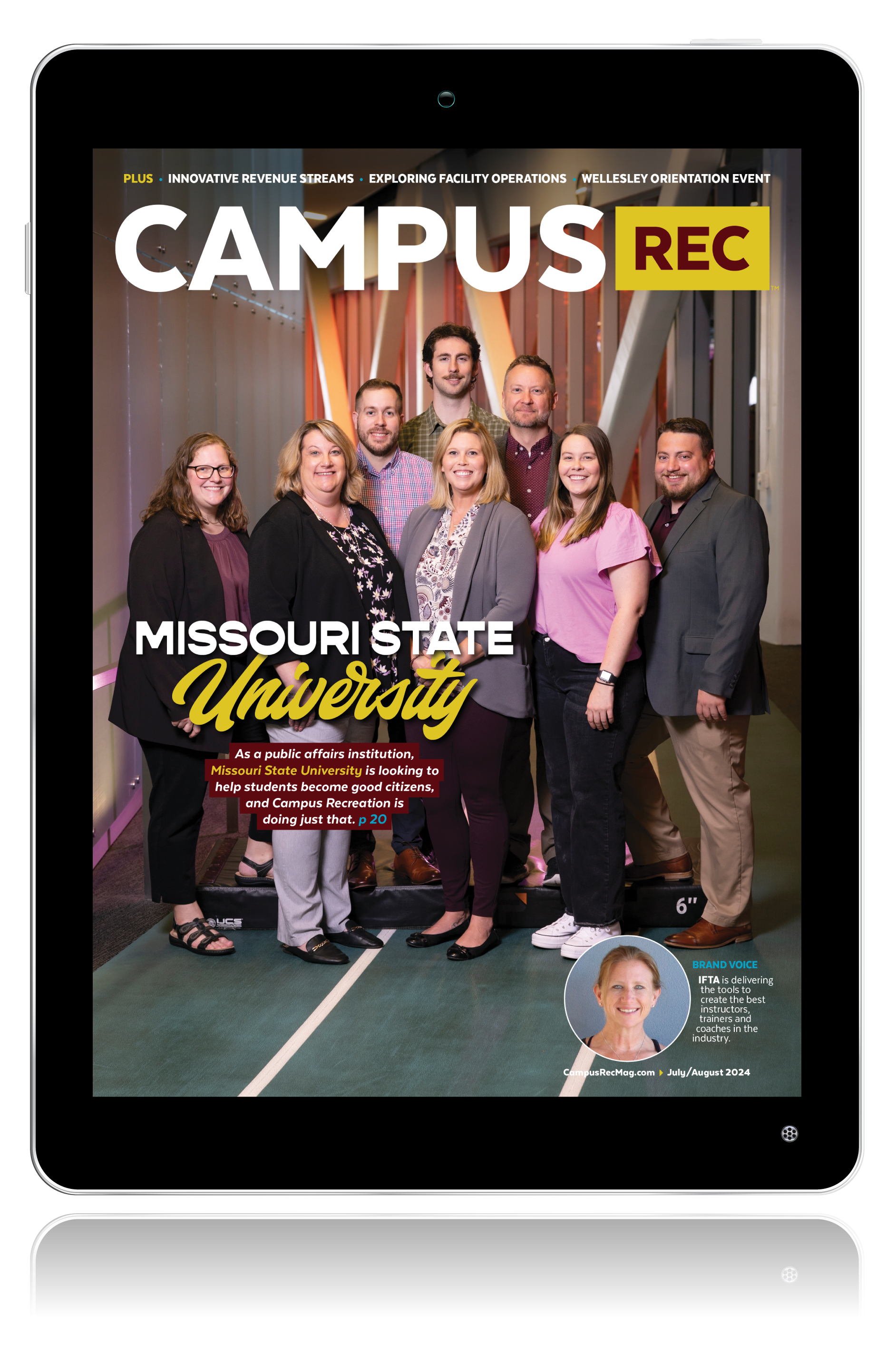
I am not a golfer. No amount of emails, posters, incentives or swag could make me play golf. But the invitation from a friend or colleague who genuinely says, “Come play golf with me” will have me yelling “fore!” often because as I mentioned, I am not a golfer. I actually have my own clubs for when that invitation comes.
An “invitation” is the written or spoken request to come somewhere or do something. It is how students know about what campus rec has to offer and the understanding, whether right or wrong, they have of the culture, behaviours and outcomes before participating. In essence, the invitation is how we recruit students into our programs and opportunities.
Traditional Marketing
The typical invitation in campus rec relies heavily on traditional marketing: social media, websites, rec guides and orientation blitzes that seek to inform students of what activities are offered, along with structural items like cost, location, registration processes and policies. This approach works great for those already comfortable in a traditional sport and rec landscape, because they know what they want and just need the information to guide them to their desired activity.
What about those who currently don’t feel like they belong in campus rec, or sport in general? Our traditional methods of inviting them do not work, yet we rely on them heavily in hopes to convince them to participate. We use pictures of fit students, use catchy phrases like “feel the burn” and talk about winning championships. For those uninitiated into sport and recreation, these tactics do not inspire students to wander into unknown territory. We need to go beyond information and take a participant-centric approach to show all students they belong in campus rec.
A Participant-Centric Approach
How are participants being invited into your programs, spaces and opportunities that motivates, inspires and leads them to show up as stress free as possible, ready to participate as their authentic selves and not worried about fitting in. Take a look at your current engagement strategy and ask: Who was the invitation created for?
How are you using language, imagery and storytelling based on feelings instead of informing students of opportunities that lead them to feeling like they belong in campus rec? Does the invitation represent the diverse nature of the student body? Not just racial, cultural or sexual identity but also those of different skill levels, body types and motivations. Not everyone is competitive or looking to get swole. How does the invitation help students understand and navigate the campus rec landscape before they even arrive in your facility?
There are also hidden invitation aspects that may not be intentional and can lead to someone feeling like they do not belong. Do students see people in your staffing and programs that look like them? Do you offer program offerings they would like beyond traditional sport and rec? Do you name programs that feel inviting rather than exclusionary? Even the building itself can lend itself to a positive or negative invitation.
The Personal Invitation
Another important reminder is that the invitation isn’t always received directly from campus rec. As a team captain for countless intramural teams, it was my role to recruit, inform and manage my player’s experience. Without my invitation, most of those players would not have played. My personal invitation, not the campus rec department, was the motivation and inspiration needed to change their behaviour into active, engaged participants.
Nothing is more powerful than word-of-mouth advertising, and your current student participants and staff should be a valuable resource in helping spread that invitation to their friends. How can you intentionally support those who are critical to inviting others who you will not reach on your own? Think of initiatives that encourage students to “bring a friend.” Find and invest in student influencers who will be active in creating meaningful invitations for their peers.
What about those who haven’t yet found peers to connect with? Campus rec can facilitate this invitation through buddy systems, intramural teams made up of free agents or by facilitating meetups for activities. PlayCity is a free app that connects people with others who are interested in the same activities, helping students find their best match based on skill level and availability while helping them discover events, facilities and locations relevant to their activity.
Go Where They Are
Lastly, to invite the unengaged, you need to go to where they are at. There are countless on-campus partners with access to different student populations that can help support you with the invitation process; the International Student Office, LGTBQ+ Resource Center, Cultural Student Groups and Residence Life are great places to start. Be prepared to listen and learn about what a meaningful invitation is for the different students you serve.
There are few invitations as powerful as “come play with me.” It’s time to look beyond our campus rec lens and understand our invitation needs to be more inclusive and meaningful for our diverse student populations. When we ask our students to come play with us, it needs to be delivered in a way that creates space for them to feel like they belong. Next time on The Power of Belonging in Campus Recreation: Welcoming Beyond the Customer Service Desk.










